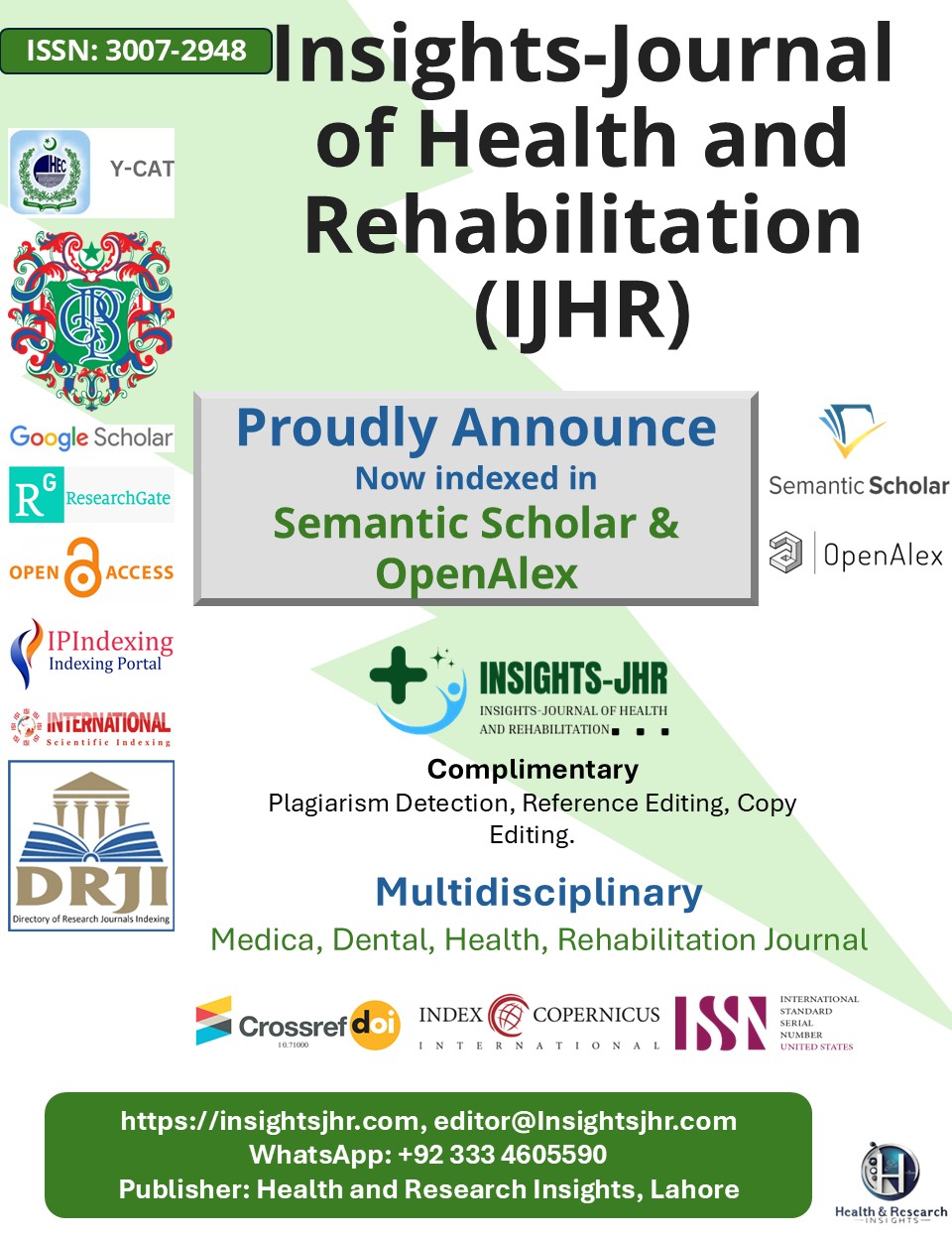SPECTRUM OF PATIENTS REPORTING FOR ELECTRODIAGNOSTIC STUDIES AT TERTIARY CARE REHAB SETUP
DOI:
https://doi.org/10.71000/bsqwjg76Keywords:
Electromyography, Nerve Conduction Studies, Neuromuscular Junction Disorders, Neuromuscular Diseases, Peripheral Nervous System Diseases, Rehabilitation Centers, RadiculopathyAbstract
Background: Neuromuscular disorders (NMDs) comprise a broad group of conditions affecting the peripheral nervous system, muscles, neuromuscular junctions, and motor neurons. Timely diagnosis is critical to prevent disability and optimize treatment. Electrodiagnostic studies, including electromyography (EMG) and nerve conduction studies (NCS), play a pivotal role in evaluating patients with suspected NMDs. However, limited access to these diagnostic services in developing countries hinders early and accurate identification of such conditions.
Objective: To evaluate the clinical indications and electrodiagnostic profiles of patients with neuromuscular disorders referred to the electrophysiology and electrodiagnostic department of a tertiary care rehabilitation center.
Methods: A cross-sectional observational study was conducted at the Military Tertiary Care Rehabilitation Center, Rawalpindi, from January 1 to August 1, 2024. A total of 610 patients referred for electrodiagnostic evaluation with suspected NMDs were enrolled. Inclusion criteria encompassed all age groups and genders. Patients with psychosis, severe psychiatric illness, contraindicated implanted devices, active bleeding disorders, or significant dermatological conditions were excluded. Detailed demographic and clinical histories were recorded, followed by standardized EMG and NCS testing performed by certified neurophysiologists. Data were analyzed using SPSS version 26, employing descriptive and inferential statistics.
Results: Of the 610 patients, 51.7% were male and 48.3% female. Age distribution included 15.0% below 18 years, 37.6% between 18–40 years, 31.3% between 41–63 years, and 16.1% over 63 years. Abnormal electrodiagnostic findings were observed in 91.63% (n=559) of cases. Radiculopathies were the most common diagnosis (32.1%), followed by carpal tunnel syndrome (17.3%), peripheral neuropathies (15.1%), and peripheral nerve injuries (13.0%). Hereditary and inflammatory neuropathies were notable subtypes, and neuromuscular junction disorders were identified in 4.8% of patients.
Conclusion: The findings underscore the diagnostic utility of electrodiagnostic studies in identifying neuromuscular disorders and highlight the urgent need for their accessibility in resource-constrained settings. Further research integrating genetic and biochemical assessments is warranted to improve patient outcomes.
Downloads
Published
Issue
Section
License
Copyright (c) 2025 Waqas Khalil, Nadeem Ahmad, Zaheer Gill, Syed Tameem Ul Hassan, Waseem Iqbal, Uzma Aftab (Author)

This work is licensed under a Creative Commons Attribution-NonCommercial-NoDerivatives 4.0 International License.







